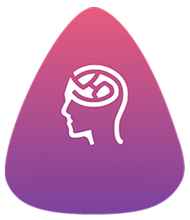Read a viewpoint opposite to yours on a management issue—summarize its strongest point in one sentence.
Ask yourself: “What’s another way to view this?” when reacting strongly to a team issue.
Change one small leadership habit today—alter the order, method, or tool you usually use.
Read an article outside your field—note one idea to apply in your leadership practice.
Challenge your default leadership choice in a low-stakes task—try the opposite approach.
Use the phrase “That’s interesting—tell me more” when a team member challenges your view.
Journal about a time when rigid thinking blocked your team—what might openness have created instead?
Reflect on your reaction to organizational change—do you resist, explore, or experiment with new practices?
Describe a time you adapted well to a surprise at work—what kind of thinking helped you shift perspective?
Write about a belief or assumption you’ve outgrown as a leader—what influenced you to change your mind?
List three recent challenges—did you explore multiple perspectives or get stuck in one?
Explore how curiosity shows in your leadership thinking—when do you ask “what if,” and when do you shut it down?
Present a new approach to your team that challenges the usual process—invite discussion, not agreement.
Switch roles in a team activity—view it from a colleague’s perspective and adjust accordingly.
Do something that stretches you intellectually—reflect on the insights afterward.
Explain a familiar topic to your team as if they were beginners—notice new perspectives.
Offer a “yes, and” response in disagreement—build on what’s said even if you differ.
Ask your team to challenge your thinking—respond with curiosity and open questions.
Ask someone to point out when you appear closed-minded—what behaviors signal it to them?
Share an example where you shifted perspective recently—ask a peer how they’ve done the same.
Ask a peer for feedback on your flexibility in brainstorming—do you invite or block ideas?
Start a conversation with someone outside your function—ask how they adapt to change.
Share how you processed a complex team decision—ask where you could have been more open.
Create a “blind spots” swap with a peer—exchange one area you each tend to overlook.
Reframe “That’s not how we lead here” as “What if we tried once, just to learn and adapt?”
Instead of “That won’t work,” ask: “Under what conditions could this succeed in our team?”
Recast uncertainty as optionality—more possible paths, not just more problems.
When stuck, say: “Let’s assume the opposite is true”—see what new team ideas appear.
See conflicting opinions as information, not threat—what variable might they capture?
Reframe mistakes as learning data—adjust your leadership hypothesis and test again.
Notice when you instantly reject a new team idea—what bias or emotion might drive that reaction?
Track your inner response when challenged by seniors—curious, threatened, or indifferent first?
Observe your response to surprise changes—freeze, pivot, or adapt—what is your first instinct?
Watch someone handle rapid reprioritization—what thinking guides their flexible behavior?
Observe meetings where innovation thrives—what mindset traits are visible in those rooms?
Track your language in uncertain moments—do you ask “what if,” or insist “that’s not possible”?


 Give Feedback
Give Feedback
